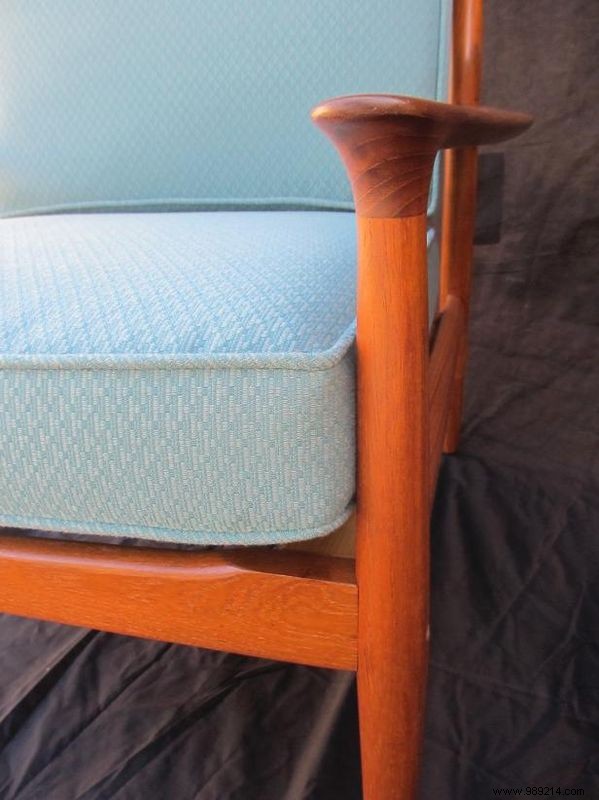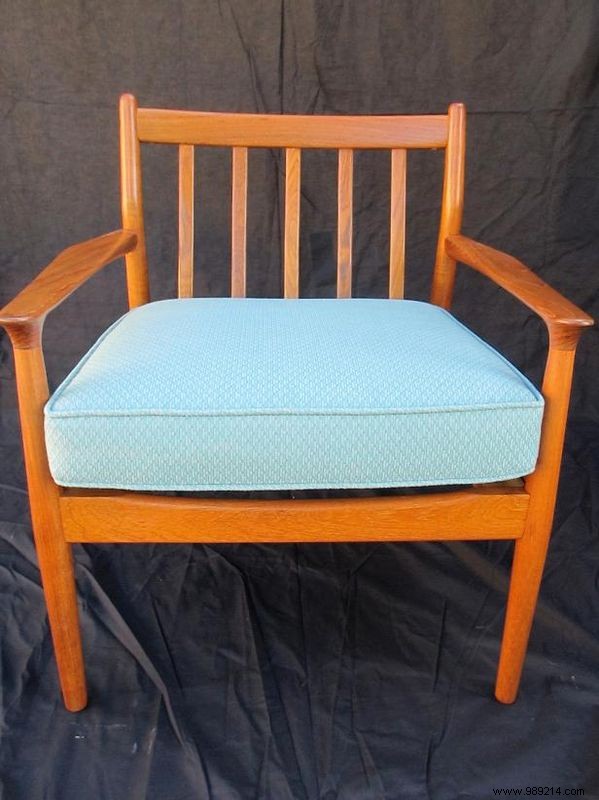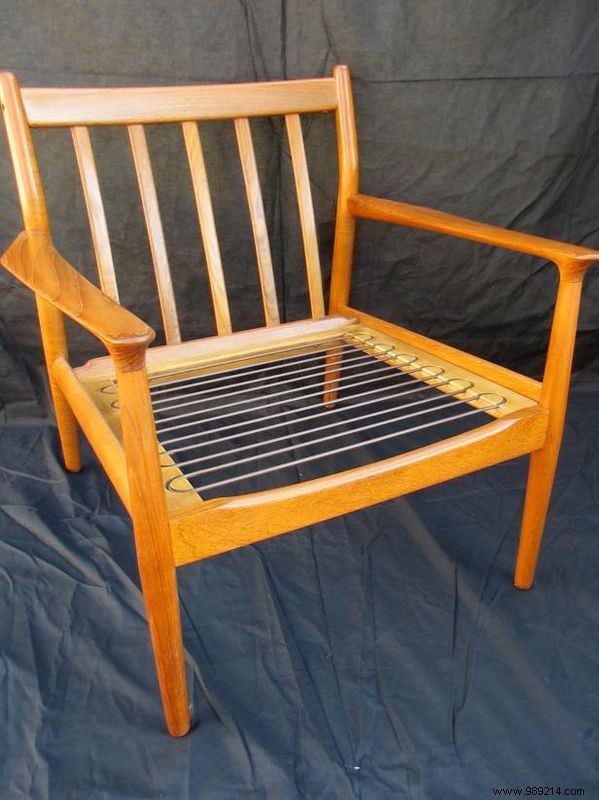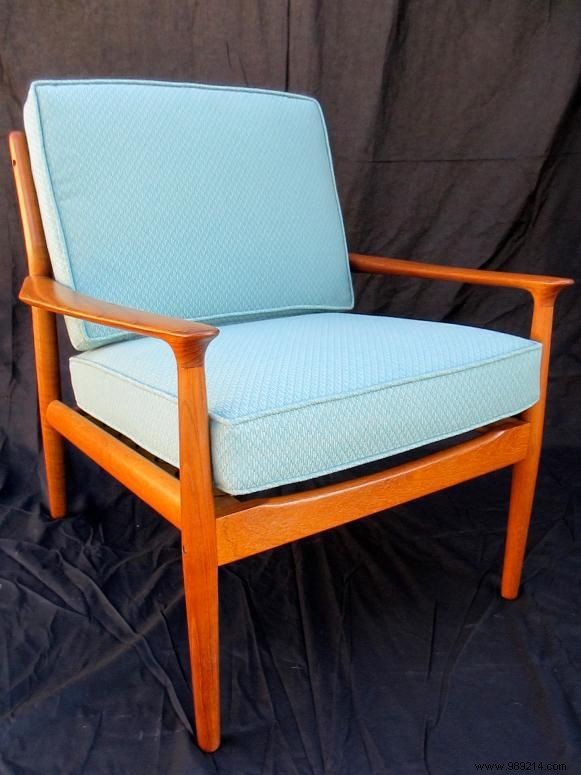
These are the key elements of a genuine mid-century modern piece of furniture:
1. the wood. Most mid-century pieces are made of solid teak, rosewood, or walnut. You may find veneers on these species on tables and other flat surfaces, but that doesn't mean it's not good.
2. Seamless construction. A true classic is rarely nailed or screwed. The Danes (who were at the forefront of this design) mastered the technique of fitting wood together using dowels and threaded screws. This makes them easily repairable.
3. The finish: Mid-Century Mod finishes are almost always natural, showing off the true beauty of wood. Occasionally a piece may be painted a solid color such as black.
We found this teak chair in a retro furniture store. Even though it looked shabby, the chair still had good bones. None of the woods cracked, and surface dents and scratches were minor, less than 1/8-inch deep, which is crucial in a natural finish; If you can't sand the damage, it will show through in the finished piece. Also, the chair had the original seat cushions, which meant it would be easy to duplicate a new set of cushions.
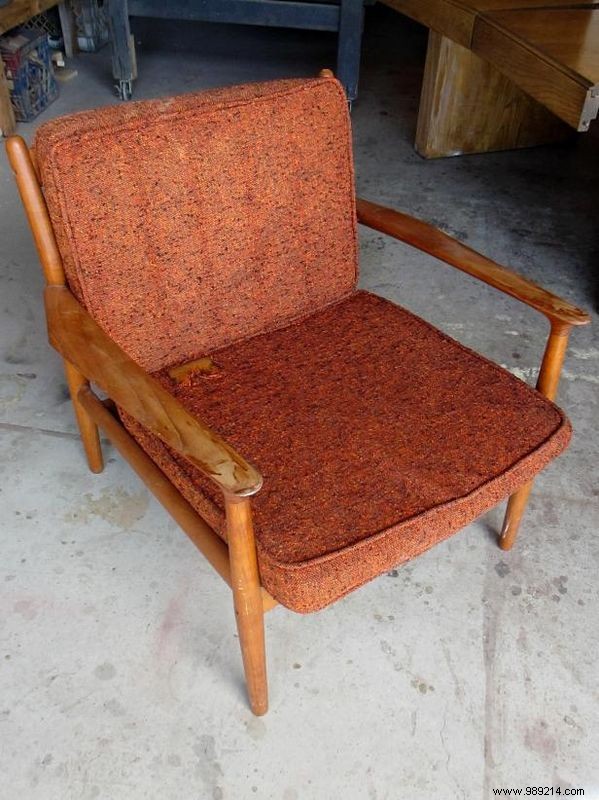
Remove the cushions and loop springs that hold tension under the seat cushion. Fortunately, the ties on our chair are in good shape, as they can be the hardest part to replace on one of these chairs. When buying a chair to refinish, make sure the loops are intact or at least get a big discount on the price if they are missing.
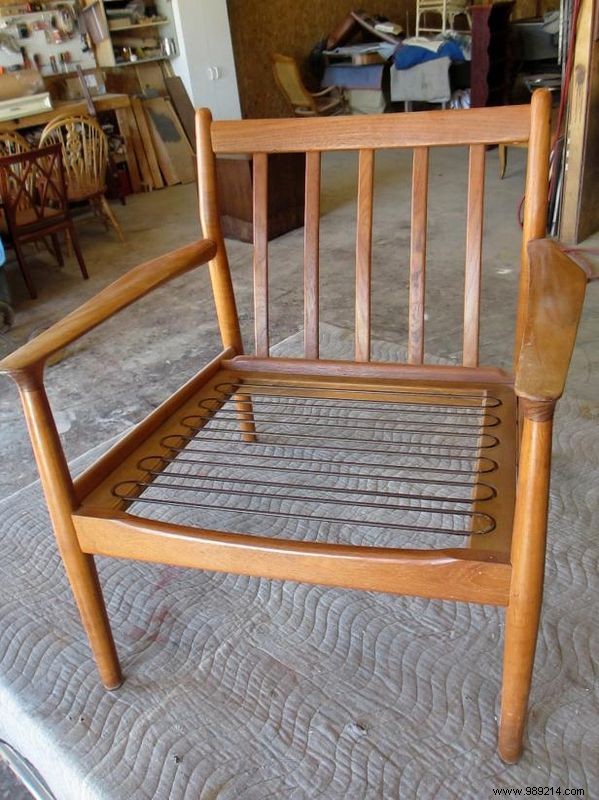
We use Jasco brand stripper because it contains wax that will help keep stripping fumes trapped on the surface of the wood longer. Wear safety glasses and rubber gloves. Using a brush, apply an even layer of stripper over the entire chair. Have water nearby in case of an accident. Apply liberally and don't brush over areas that are already coated because it will break down the chemicals and they won't work as well.
To speed up the process time and help the stripper, cover the chair with black plastic garbage bags for about 20 minutes. It doesn't have to be completely sealed, but if you can fit the entire chair in one big bag, that's best. After the 20 minutes, remove the bags and use a metal paint scraper to remove the finish and paint stripper from the chair.
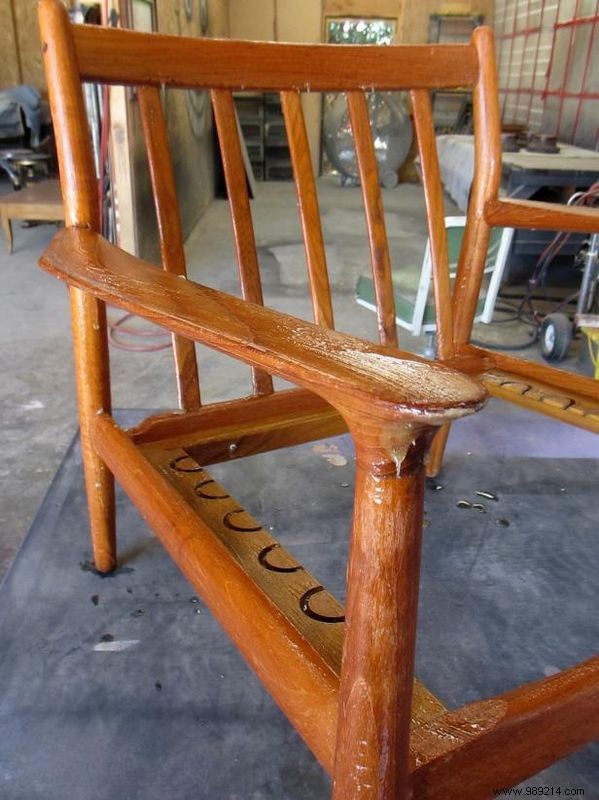
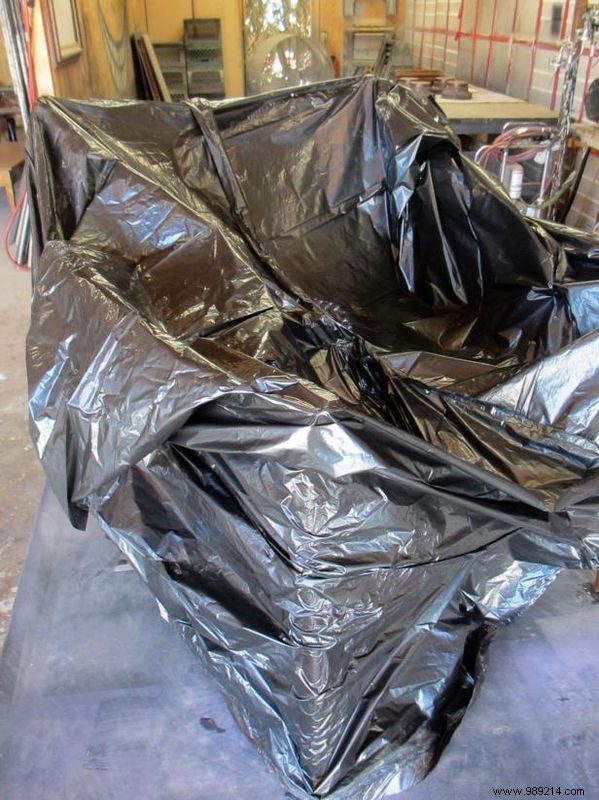
Use odorless mineral spirits and a plastic bristle brush to scrub the access stripper and finish. The mineral spirits will deactivate the stripper, and if any get into the pores of the wood, it will be safe to refinish with a minimal amount. It should be a bit white at this point, but don't worry; can be sanded later.
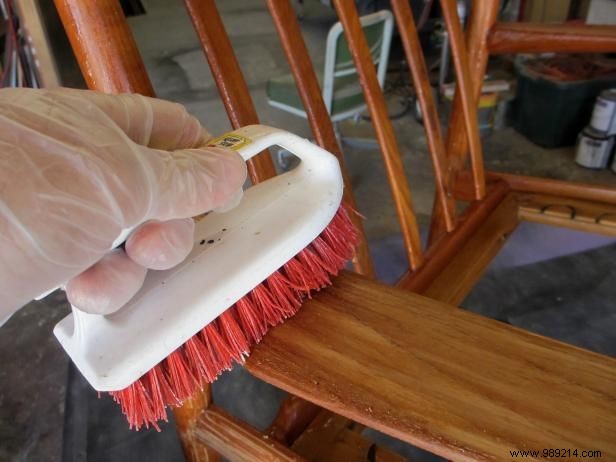
You may ask why now and not before. Stripper is a bear to work with when you have nothing to grab, so keeping the chair intact while you do it makes the process much easier. Also, it's easier to sand (with the grit) when it's in pieces. Separate the chair into as many pieces as you can easily take apart. Our chair has four pieces:right side, left side, seat and back.
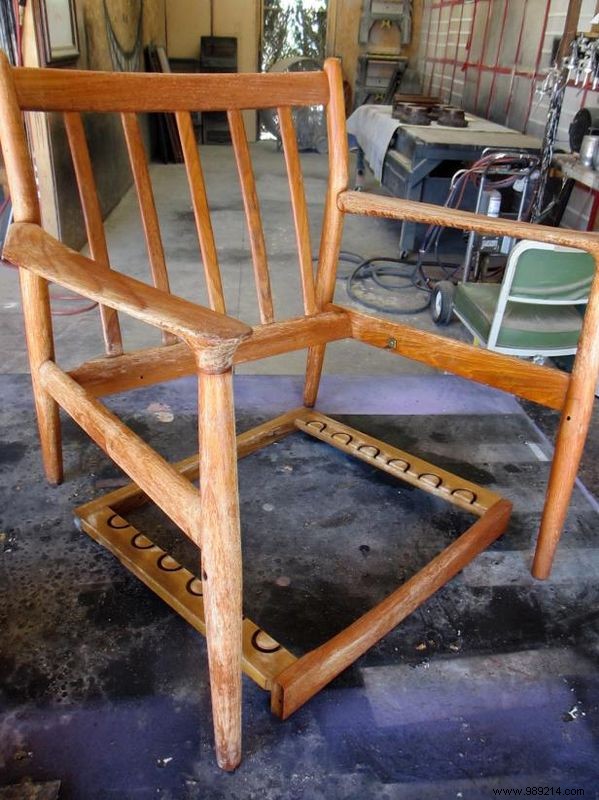
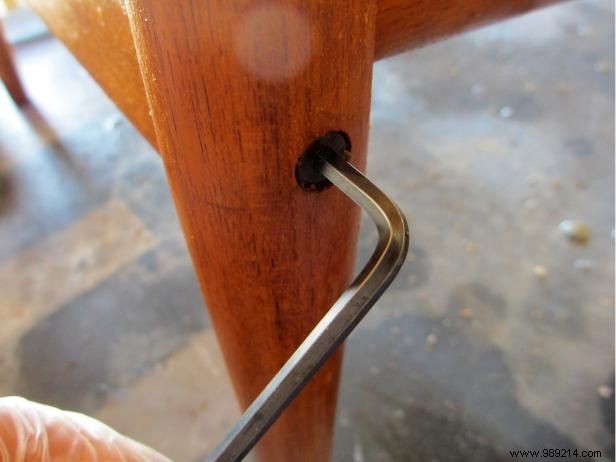
This is where you make or break the project, so take your time and be methodical. Use 150 grit sandpaper on a palm sander and follow the contours of the chair. (Good sandpaper is worth the extra cost, so buy the good stuff. It will last longer and won't tear as quickly.) Sand everything evenly and be careful not to "scratch" the sander on the edges as it will leave marks on the wood you are trying to smooth. If you are in a restricted area, just leave it for hand sanding.
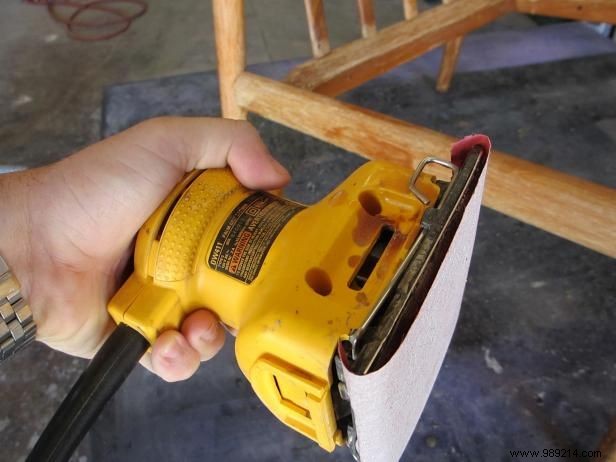
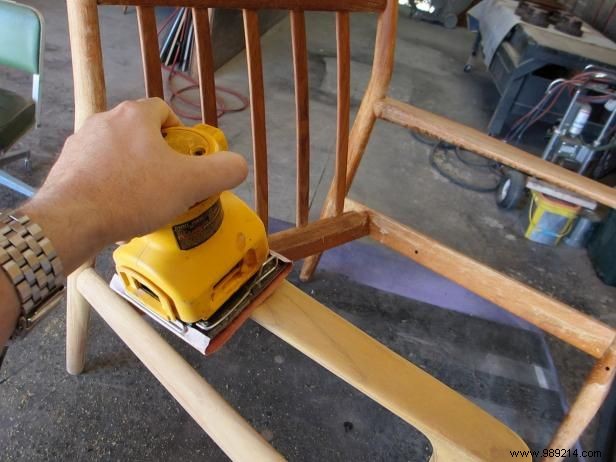
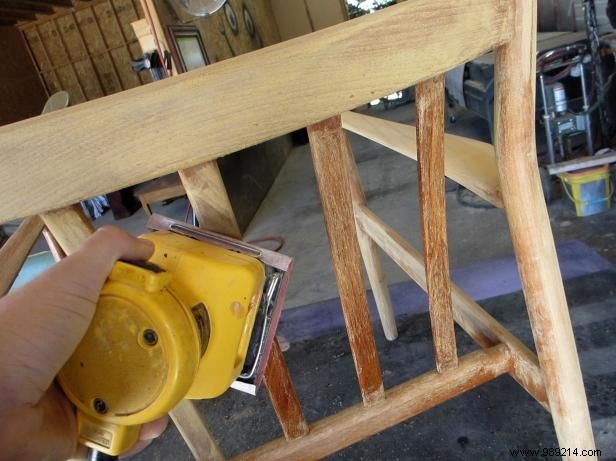
Cut sandpaper into manageable squares. You should be able to get four squares out of each full-size sheet of sandpaper. Fold each square in half and start working on the hard to reach areas you couldn't get with the palm sander. Try to sand with the grit, even if that means going in short strokes when butting up against an area of constriction.
Very important: All sanding marks will show on the finished piece. The key to a professional looking job is in the sanding as well as the finish.
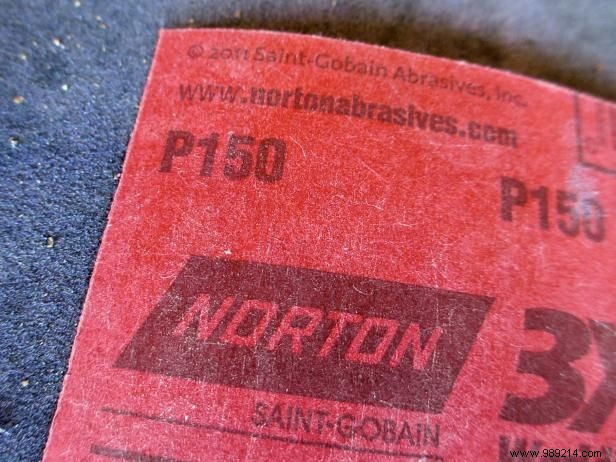
To get the rich golden orange color of teak, apply a coat of teak oil. It will penetrate the grain of the wood and seal it, while bringing out the natural color of the wood. Start by pouring a small amount from the can into a container that you can dip a brush into. Use a chip brush to spread teak oil on all parts of the chair. Cover it tightly and let the oil sit for about 5-7 minutes (in warmer weather maybe 3-4 minutes). Then wipe all the parts with a clean cloth.
Very important: Be sure to remove all excess teak oil or it will build up and take days to dry. Once completely clean, let all pieces sit for at least 12 hours.
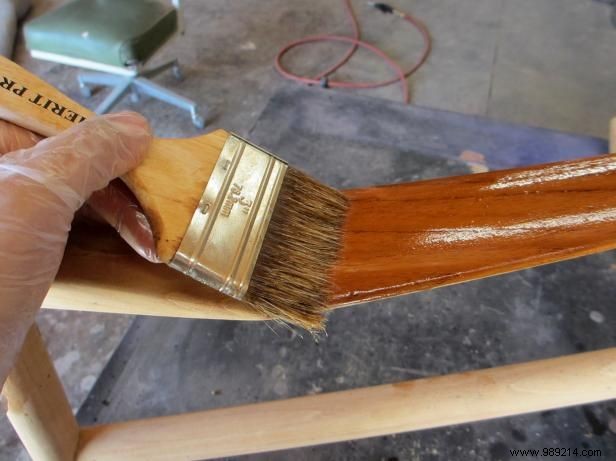
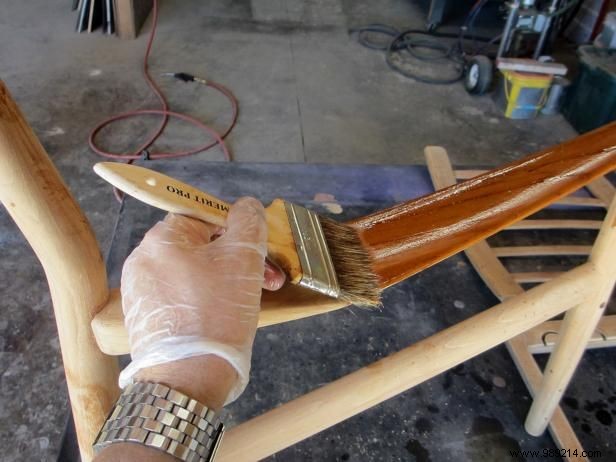
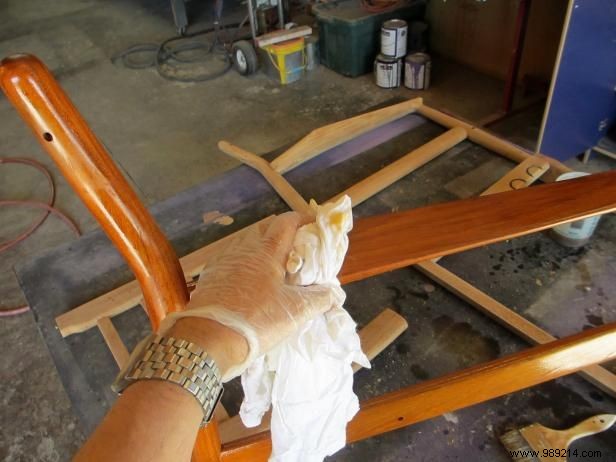
At this point, there are two options. You can stop and just have a thin hard coat of teak oil to bring out the natural beauty of the wood. You will need to reapply another coat of teak oil every two years or when you start to see wear. If you stay up to date, you won't need to rough and finish. This option will give you a much flatter finished look and is not for high traffic use.
The second option is to spray lacquer on the piece to add a protective clear coat in a satin sheen. Although it is still liquid permeable, you should get 15 years from a finish like this. Spray on two or three coats of lacquer (we used the Deft brand). Hold the can 8 to 10 inches from the surface and follow the contours of the chair. Don't stop at one place; keep your hand moving in one fluid motion to get even coverage. Lightly sand between coats with 320 grit sandpaper, just enough to remove any roughness in the finish, but do not sand through the teak oil coat. You can use a brush lacquer, but if your furniture has a lot of curves or edges, it can be hard to stop the drip and run.
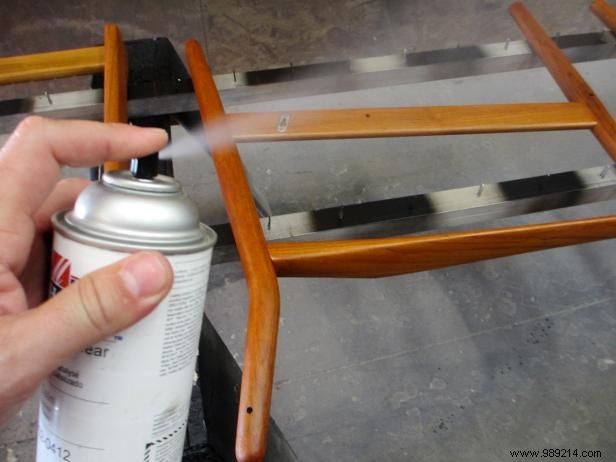
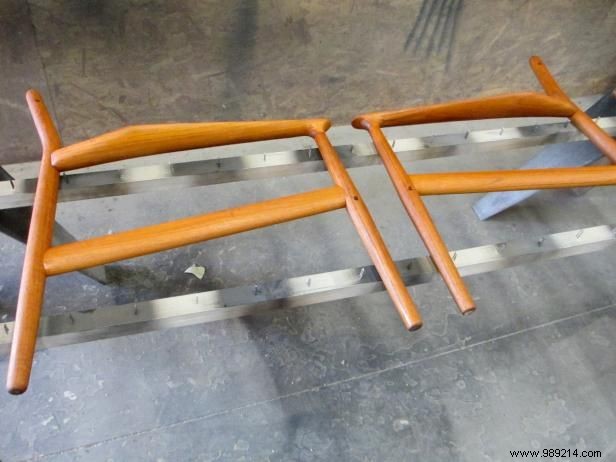

Let each piece dry for 24 hours before putting them all back together. Assemble the pieces in the reverse order that you took them apart. Make sure everything is tight but not too tight.
Unless you have a lot of sewing skills, you're probably best off finding a local upholstery shop to make both simple cushions and covers. You should need 2 1/2 yards of fabric if you are using a solid pattern and 3 1/2 to 4 yards if you are using a repeating pattern. Make sure they add a decorative piping cord to the edges of the cushion cover to give it a professional look.
